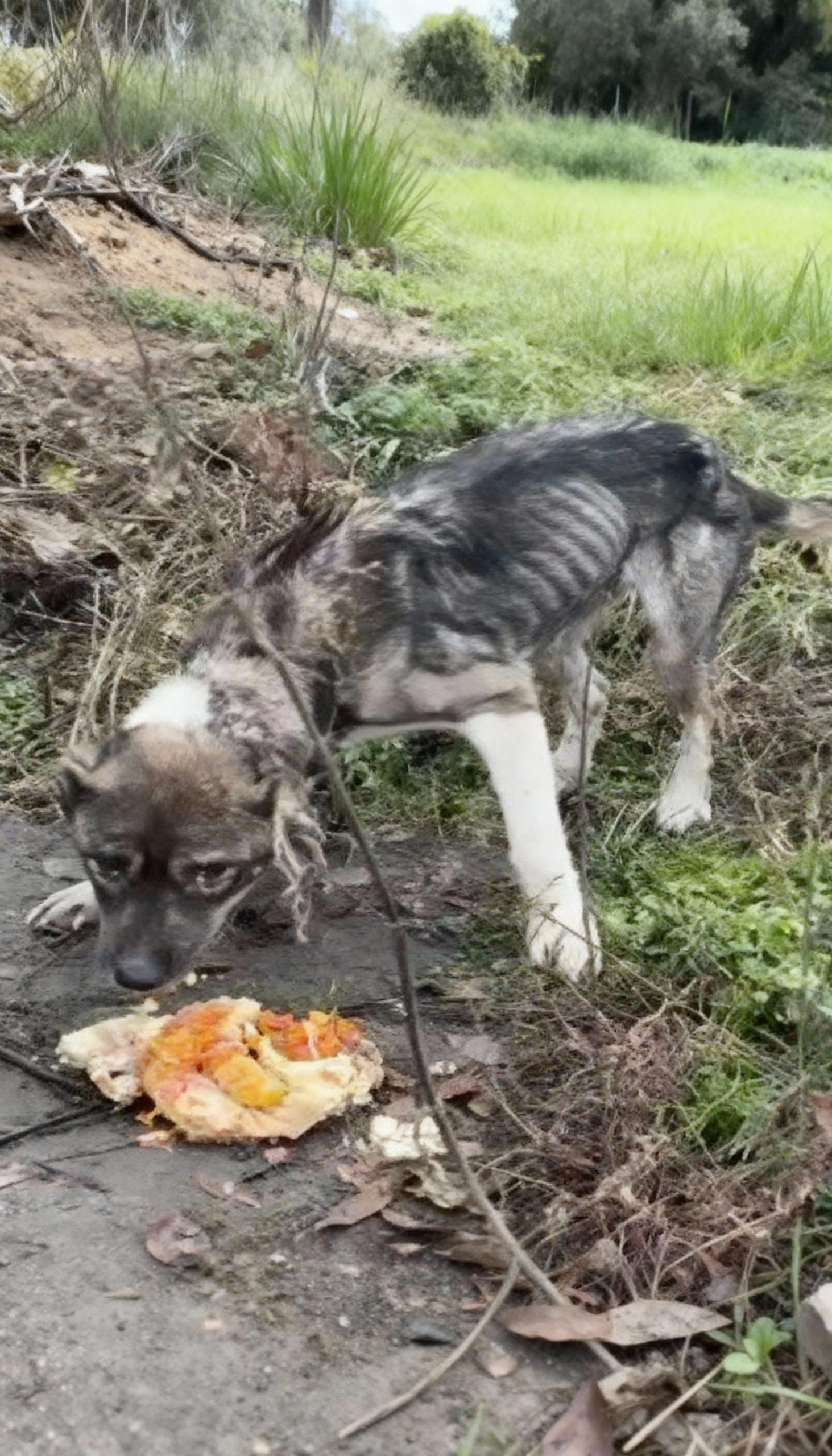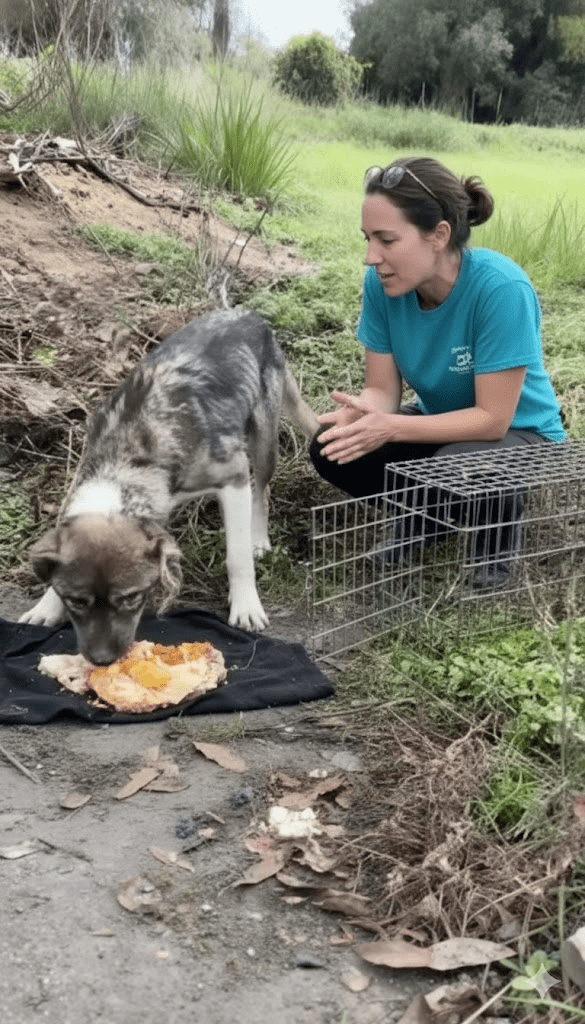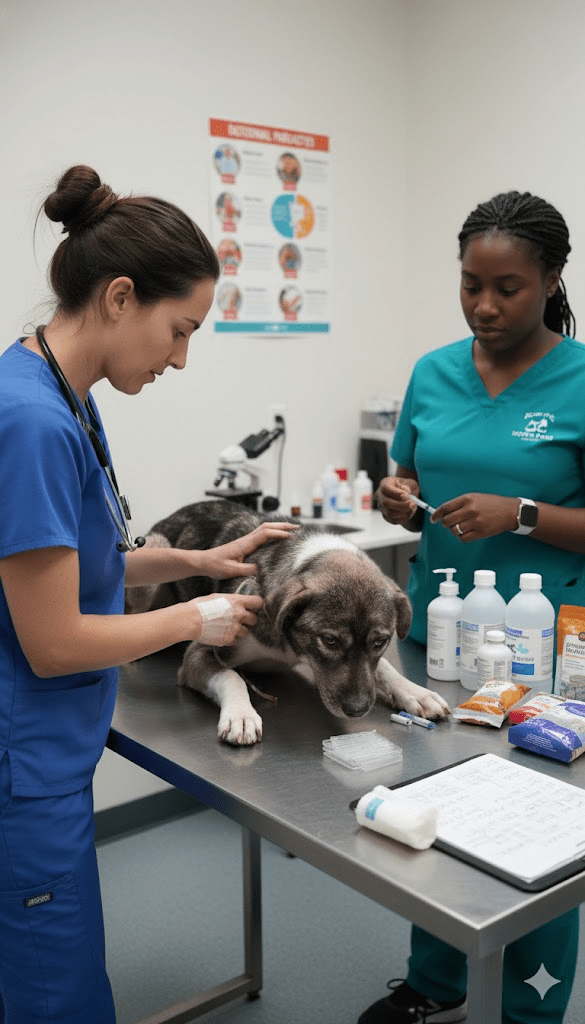The stark reality of animal abandonment often hits hardest when confronted with an image like the one before us: a severely emaciated dog, its ribs painfully visible, scavenging for scraps in a desolate, overgrown area. This heart-wrenching sight is not merely a picture; it’s a profound narrative of neglect, suffering, and a desperate plea for intervention. The dog, a young husky mix, embodies the countless forgotten souls cast aside, left to battle hunger, disease, and the elements alone. Its story, sadly, is far from unique. Across the globe, animals are abandoned daily, their fates sealed by human indifference or circumstance. They wander into the fringes of society, often unseen, unheard, until a compassionate eye catches a glimpse of their struggle. This particular dog’s journey, beginning with such profound despair, took a turn when a dedicated rescue team stumbled upon it, prompting a mission to provide not just food, but a chance at a new life. The challenges were immense, from earning the animal’s trust to addressing its severe health issues, but the commitment to alleviating its suffering fueled every step. This article delves into the critical stages of rescuing such vulnerable animals, highlighting the immediate actions required, the long-term care involved, and the broader societal implications of animal abandonment. It aims to shed light on the arduous yet rewarding work of animal rescuers and inspire readers to consider their role in combating this pervasive issue. The images accompanying this piece are designed to resonate with the raw emotion and challenging circumstances depicted in the original photograph, emphasizing the journey from despair to a hopeful future, all while maintaining a consistent visual and emotional tone.

First Contact: Building Trust and Providing Immediate Aid
The initial encounter with an abandoned, emaciated animal is crucial. These animals are often terrified, wary of human contact due to past trauma or prolonged isolation. The first priority is to approach with extreme caution, speaking softly and avoiding sudden movements. Offering food, as seen in the original image, is often the most effective way to begin building trust. A small, palatable meal, perhaps wet food or cooked chicken, can be a powerful olive branch. While the immediate instinct might be to rush in and grab the animal, patience is paramount. Forcing interaction can lead to the animal fleeing, making subsequent attempts even more difficult. Once the animal shows a slight relaxation and begins to eat, rescuers can attempt to slowly get closer. Traps, such as humane live traps, are often necessary for highly skittish animals, ensuring their safety and preventing further injury. Simultaneously, a preliminary assessment of the animal’s physical condition is vital. Are there visible injuries? Is it struggling to move? This early evaluation helps determine the urgency of veterinary intervention and the immediate care required. The goal of this phase is not just to capture the animal, but to do so in a way that minimizes stress and lays the groundwork for rehabilitation.

Medical Intervention: Addressing the Scars of Neglect
Once secured, the rescued animal’s journey immediately shifts to urgent medical care. Emaciated animals often suffer from a multitude of health issues beyond starvation. Dehydration is common, requiring intravenous fluids to stabilize their system. Parasites, both internal and external, are almost a given. Worms can further deplete their already fragile bodies, while fleas and ticks can lead to anemia and transmit diseases. Skin infections, often a result of malnutrition and prolonged exposure, need immediate attention. A thorough veterinary examination will include blood tests to assess organ function, check for underlying diseases, and determine the severity of malnutrition. Re-feeding must be done cautiously, as giving too much food too quickly can lead to re-feeding syndrome, a potentially fatal condition. A specialized diet of small, frequent meals is introduced gradually, allowing the digestive system to recover and slowly absorb nutrients. Pain management is also crucial, as many abandoned animals arrive with untreated injuries or chronic pain. The veterinary team works meticulously to address each ailment, recognizing that their comprehensive care is the cornerstone of recovery.

Rehabilitation: Nurturing Body and Spirit
Beyond the immediate medical crisis, the path to full recovery for abandoned animals involves extensive physical and psychological rehabilitation. For animals like the husky mix, who have experienced prolonged periods of starvation, regaining a healthy weight and muscle mass is a gradual process that requires a carefully controlled diet and gentle exercise. However, the emotional scars often run deeper than the physical ones. Many rescued animals suffer from severe anxiety, fear of humans, or behavioral issues stemming from their past experiences. This is where dedicated foster care and behavioral training become indispensable. Foster homes provide a stable, loving environment away from the stresses of a shelter, allowing the animal to decompress and learn to trust again. Trainers use positive reinforcement techniques to help these animals overcome their fears, socialize appropriately, and learn basic commands, preparing them for a future in a forever home. This phase is characterized by patience, understanding, and a commitment to helping the animal heal not just physically, but emotionally, restoring their faith in humanity.







